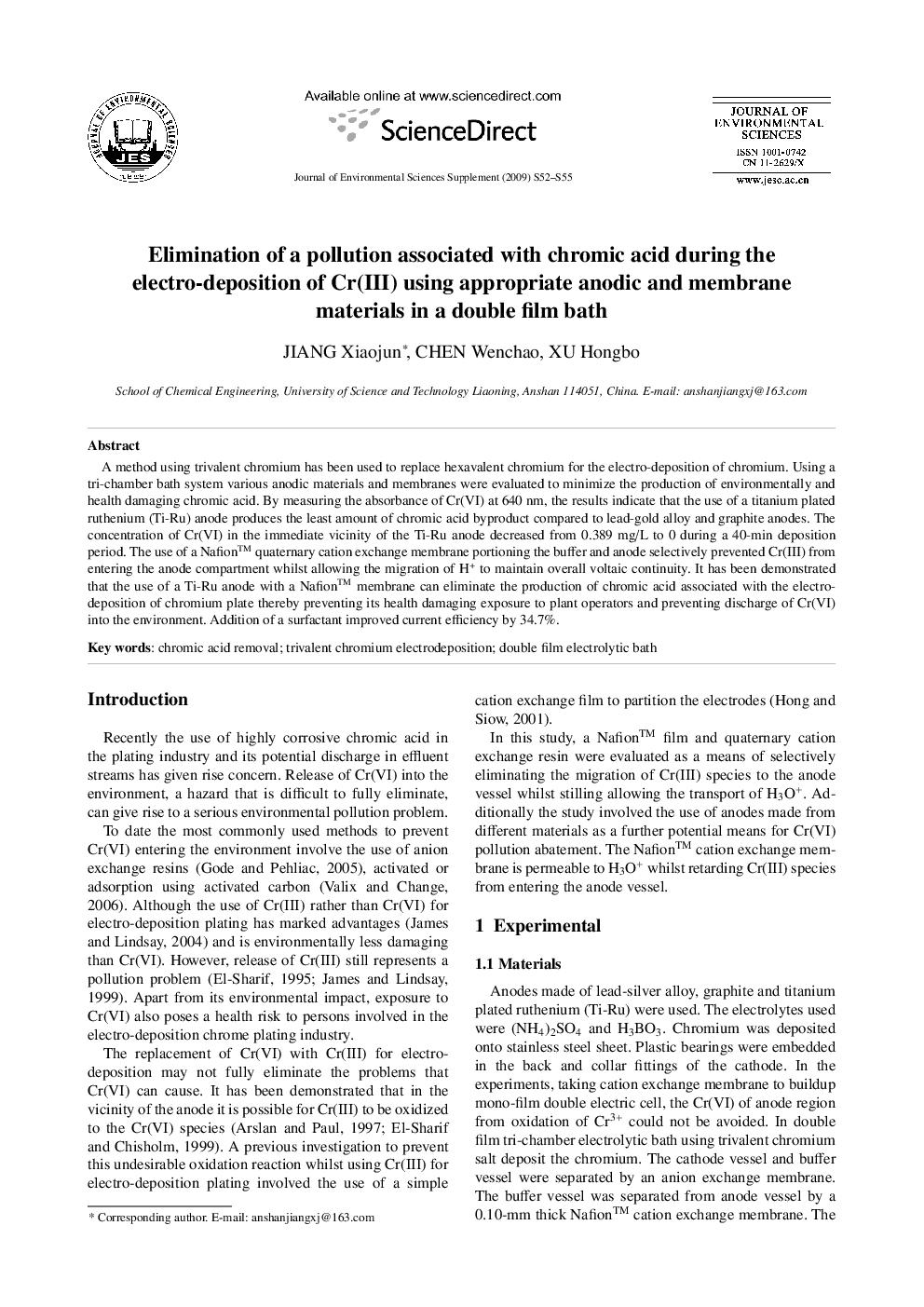| Article ID | Journal | Published Year | Pages | File Type |
|---|---|---|---|---|
| 4456430 | Journal of Environmental Sciences | 2009 | 4 Pages |
A method using trivalent chromium has been used to replace hexavalent chromium for the electro-deposition of chromium. Using a tri-chamber bath system various anodic materials and membranes were evaluated to minimize the production of environmentally and health damaging chromic acid. By measuring the absorbance of Cr(VI) at 640 nm, the results indicate that the use of a titanium plated ruthenium (Ti-Ru) anode produces the least amount of chromic acid byproduct compared to lead-gold alloy and graphite anodes. The concentration of Cr(VI) in the immediate vicinity of the Ti-Ru anode decreased from 0.389 mg/L to 0 during a 40-min deposition period. The use of a NafionTM quaternary cation exchange membrane portioning the buffer and anode selectively prevented Cr(III) from entering the anode compartment whilst allowing the migration of H+ to maintain overall voltaic continuity. It has been demonstrated that the use of a Ti-Ru anode with a NafionTM membrane can eliminate the production of chromic acid associated with the electro-deposition of chromium plate thereby preventing its health damaging exposure to plant operators and preventing discharge of Cr(VI) into the environment. Addition of a surfactant improved current efficiency by 34.7%.
